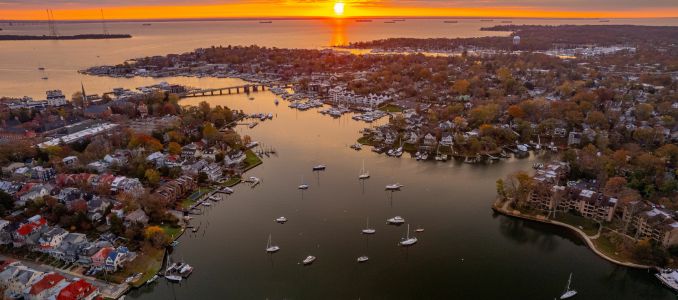
Governor Moore Announces $340 Million Conowingo Dam Agreement to Restore Chesapeake Bay and Boost Clean Energy
The landmark deal funds water quality improvements, ecosystem restoration, and long-term operational upgrades for Maryland’s largest renewable energy facility.
Governor Wes Moore has announced a historic $340 million agreement between the State of Maryland, Constellation Energy, Waterkeepers Chesapeake, and the Lower Susquehanna Riverkeeper Association to fund major environmental and operational improvements at the Conowingo Dam. The agreement represents a major step toward meeting enforceable water quality standards, restoring the Chesapeake Bay ecosystem, and securing the future of one of Maryland’s largest sources of clean energy. “The Chesapeake Bay is the keystone to Maryland’s prosperity,” said Gov. Moore. “This agreement will lead to real improvements in water quality in the biggest tributary of the Chesapeake Bay, while securing the future of one of our state’s largest clean energy producers.”
The Conowingo Dam, located on the Susquehanna River, is the state’s largest hydroelectric facility and a significant renewable energy producer. The new agreement includes commitments to address longstanding environmental challenges associated with the dam’s operation, including sediment buildup, debris, and aquatic habitat disruption.
The funding allocations include: $87.6 million for pollution reduction and resiliency initiatives such as shoreline restoration, forest buffers, fish passage projects, and planting underwater grasses; $77.8 million for trash and debris removal, expanding efforts to clear 600 tons annually through innovative barging operations; more than $28 million for fish and eel passage improvements to help species like American shad and river herring rebound; $23.3 million to build and operate a freshwater mussel hatchery to filter water and reduce pollution; $18.7 million for dredging studies; and $9.4 million for invasive species management to control harmful species like snakeheads and blue catfish. Environmental groups will play an ongoing role in overseeing the implementation of the settlement terms.
The agreement clears the way for federal re-licensing of the Conowingo Dam, which faced years of legal disputes following a 2018 certification and 2019 settlement. That earlier deal, valued at $230 million, was vacated after an appeals court overturned the facility’s 50-year license in 2022. The revised agreement follows more than a year of mediation and public comment, resulting in a new Water Quality Certification issued by the Maryland Department of the Environment under Section 401 of the Clean Water Act. Once incorporated into the dam’s operating license, the state will ensure full enforcement of the obligations.
“This historic agreement ensures that our children and grandchildren will inherit a Chesapeake Bay and Susquehanna River that are cleaner and healthier than they are today,” said Maryland Attorney General Anthony G. Brown.
The Chesapeake Bay supports a $3.2 billion tourism economy and a seafood industry valued at nearly $600 million annually. The agreement is expected to generate both ecological and economic benefits by improving water quality, restoring habitats, and enhancing recreation and tourism opportunities. “With this agreement, we are protecting clean water and vibrant ecosystems for generations to come while supporting jobs, commerce, and energy security,” said Maryland Department of the Environment Secretary Serena McIlwain.
The deal has received broad support from environmental organizations, legislators, and energy leaders. Constellation Energy, which operates the dam, emphasized its commitment to clean energy without shifting business risks to consumers. “The Susquehanna watershed is home to one of the largest concentrations of clean energy generation in America,” said Constellation President and CEO Joe Dominguez. “We’re proud to invest in clean generation, protect water quality, and power Maryland’s economy.”
Governor Moore has also proposed more than $400 million in his FY26 budget for Chesapeake Bay and clean water projects, expanding restoration efforts through new legislation and investments in infrastructure and agriculture. Waterkeepers Chesapeake and Lower Susquehanna Riverkeeper, who successfully challenged earlier licensing terms, hailed the settlement as a turning point for the river and the Bay. “Today’s agreement marks a new era for the dam and a new commitment for clean water,” said Robin Broder, Acting Executive Director of Waterkeepers Chesapeake. “This agreement is not the end of our efforts, but rather the beginning of an important new chapter,” added Ted Evgeniadis, Lower Susquehanna Riverkeeper.
Federal lawmakers echoed the sentiment, calling the agreement both an environmental and economic imperative for the state. Once finalized, the settlement will govern the dam’s operations for decades, ensuring a balanced approach to renewable energy generation, water quality protection, and ecosystem restoration. “Restoring the Chesapeake Bay is both an environmental and economic imperative for Maryland,” said U.S. Senator Chris Van Hollen. “This agreement marks a major step toward a healthier Bay and a stronger Maryland.”
About the Author
Stasia DeMarco is the Content Editor for EPOnlne.


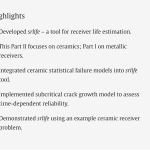



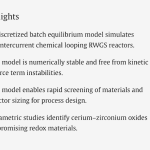
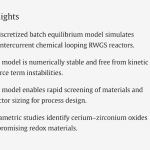
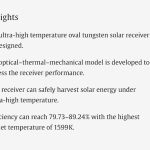


[…] Protection 14:26 Google Launches AI Bug Bounty with $30,000 Top Reward 05:50 Governor Moore Announces $340 Million Conowingo Dam Agreement to Restore Chesapeake Bay and Boost Cl… 04:16 Clou Unveils the Latest Energy Storage Innovations at Solar & Storage Live UK […]